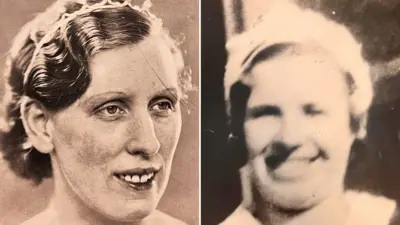We've updated our Privacy and Cookies Policy
We've made some important changes to our Privacy and Cookies Policy and we want you to know what this means for you and your data.
Tackling Scotland's teacher troubles
- Author, Jamie McIvor
- Role, ҙуПуҙ«ГҪ Scotland education correspondent
As schools return from the summer break, some still have vacancies to fill.
There is not a crisis in overall teacher recruitment across Scotland - and there will always be vacancies to fill - but there are some very real, specific problems.
While stories about scenic island schools struggling to find a teacher can attract the headlines, schools in less isolated rural areas can face big challenges too.
Often applicants have to be tempted to move to the area or return home after years away.
There are also concerns that high house prices in the north east may make teacher recruitment there harder.
Problems in specific subjects - notably science, maths and technology - have also been highlighted.
There have been reports that some .
While teacher numbers across Scotland fell for many years, the number is now stable - a problem filling a vacancy is not the same thing as a cut.
Councils get most of their money from the Scottish government and they are now, essentially, expected to maintain teacher numbers.
They cannot cut teachers' jobs to save cash.
Various possible solutions to the problem of filling vacancies have been suggested. They include offering help with housing, marketing a specific area to potential applicants, making it easier for locals to become teachers in the first place and ensuring that teaching itself is an attractive career option.
Regular teacher
However, the debate becomes heated when more radical measures are proposed, such as changing the training or registering criteria for new teachers in Scotland.
To teach at a state school a teacher has to be registered with the General Teaching Council for Scotland (GTCS) - a self-regulating body which controls entry into the profession.
The usual way into secondary teaching is to study for a postgraduate diploma in education.
The GTCS has to approve any teacher training courses in Scotland and someone studying for their postgraduate diploma would not normally be allowed to take a class, although they would work alongside a regular teacher and help them out.
A pilot scheme will see science, technology, engineering and maths (STEM) teaching graduates combine post-graduate education with their probationary year in teaching.
The idea is to cut the length of time it would take STEM graduates to become teachers, although, for now, most will still enter the profession by traditional means.
The EIS, which is the largest teachers union in Scotland, has warned against "short cuts", which it fears could undermine standards for the profession.
Massive row
A particular union concern is "graduate trainee" schemes for teachers, such as Teach First, which can allow trainees to teach relatively quickly.
Some teachers who learned "on the job" south of the border would not be eligible for registration in Scotland, although the vast majority of teachers from England and Wales should have no difficulty meeting the requirements of the GTCS.
A pilot scheme in Moray allows teachers from England who live locally and do not meet the normal GTCS requirements to be provisionally registered while they undergo top-up training.
But any move to allow widespread changes to teacher training in Scotland - especially if they involved "learning on the job" or "putting unqualified teachers in the class" would almost certainly lead to a massive row between the Scottish government, the GTCS and the teachers' unions.
In the meantime, schools which have vacancies will have to continue to find interim solutions - supply teachers or, potentially, even changing the timetable.
Top Stories
More to explore
Most read
Content is not available








